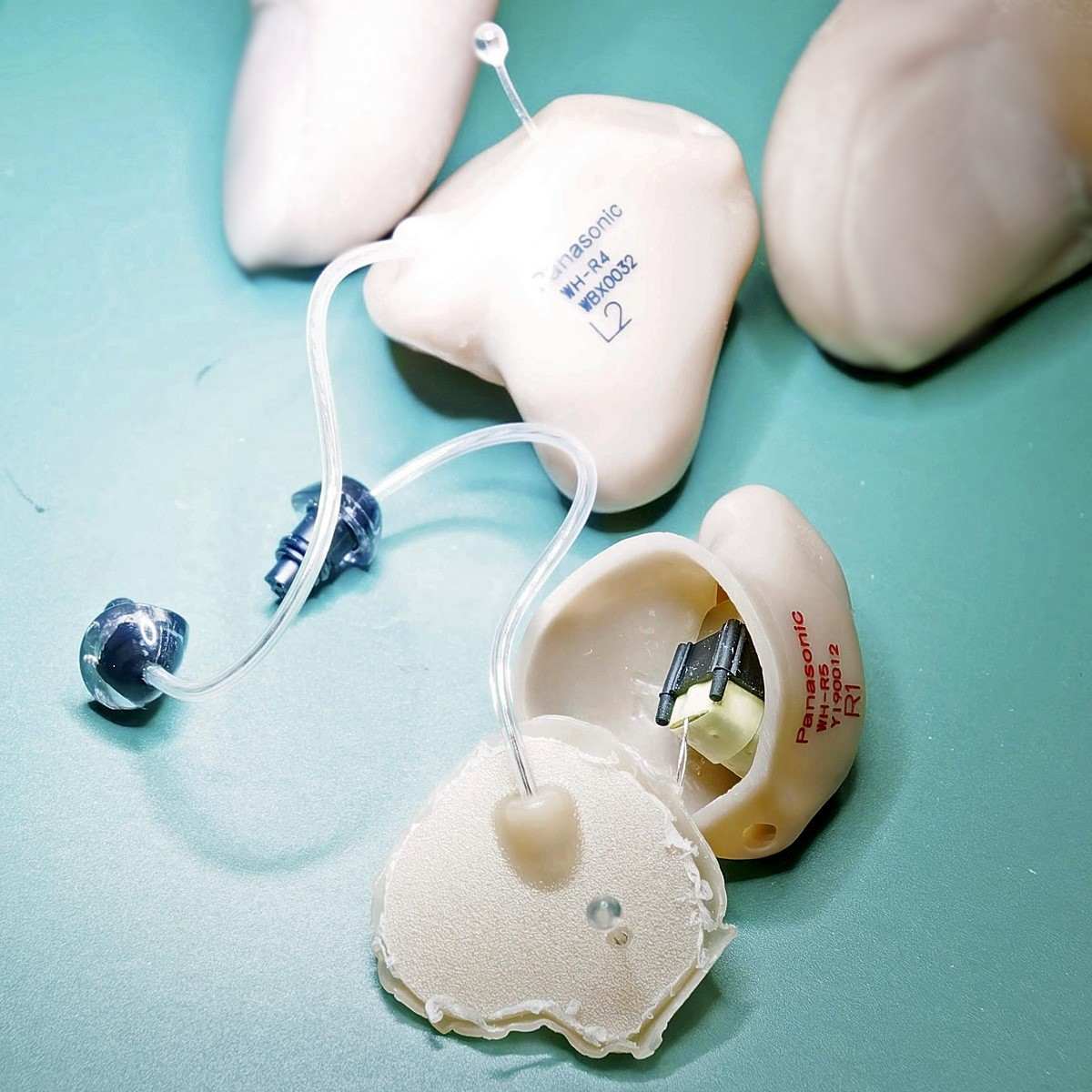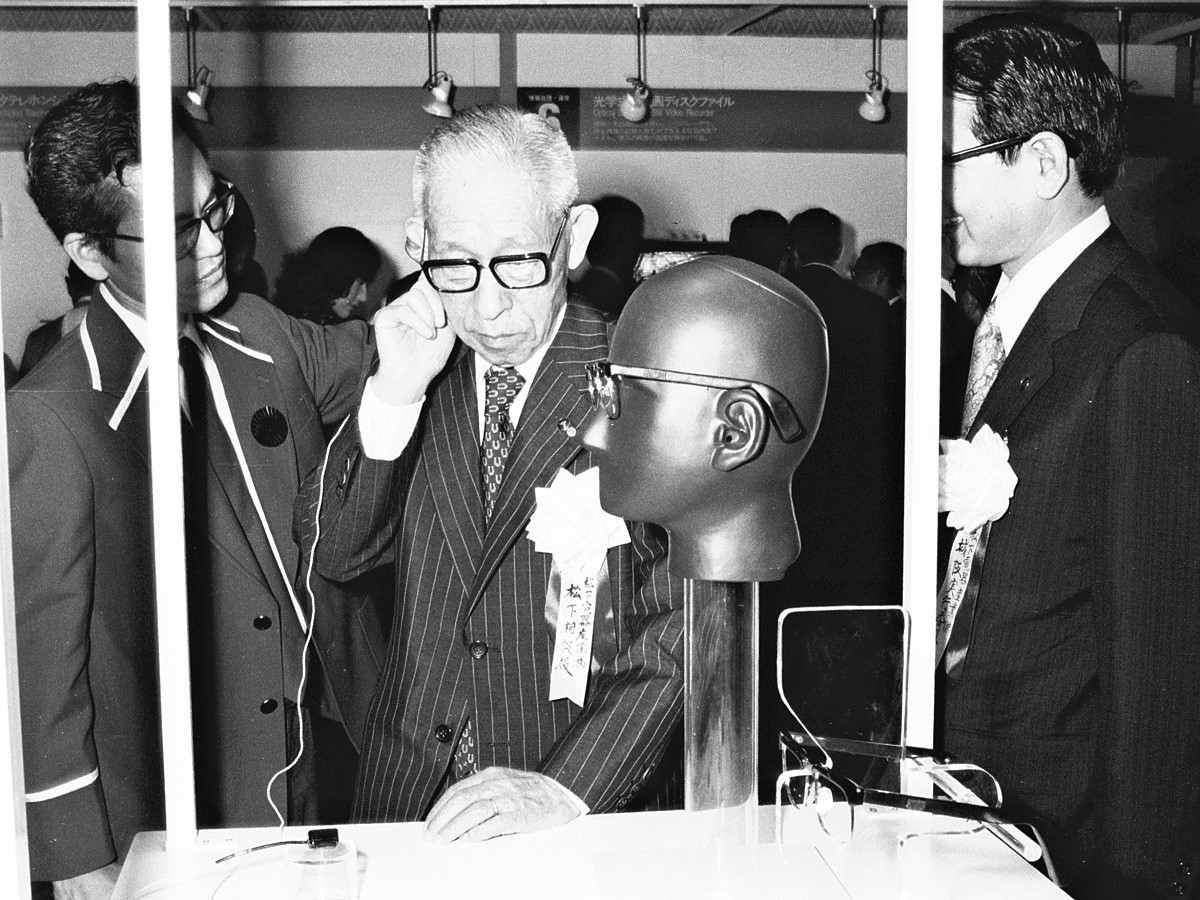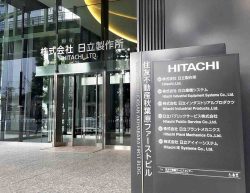Hearing Aids Becoming More Fashionable, Functional; Demand Rising as Japan’s Population Continues to Age Rapidly

Panasonic Holdings Corp.’s hearing aid that incorporates a precision instrument
12:57 JST, November 3, 2024
As Japan’s population is aging, demand for hearing aids is increasing in the country. Last year saw the shipment of a record 650,000 hearing aids. On the other hand, some people are reluctant to use hearing aids, saying they feel embarrassed to wear them. In response, manufacturers are focusing on products with improved design and functionality.
At Panasonic Holdings Corp.’s plant in Tosu, Saga Prefecture, technicians were carefully assembling hearing aids using tweezers and soldering irons while peering through microscopes on their desks, ahead of the Respect-for-the-Aged Day on Sept. 16.
The completed products are shipped from Tosu to other parts of the country. “Hearing aids play the role of helping people hear easily and improving their quality of life,” said Tadashi Shimotoso, head of the hearing aid manufacturing section. “We’d like to create products that will allow people to experience the joy of being able to hear.”

Konosuke Matsushita, founder of the Panasonic Group, tests hearing aids at a technological exhibition in 1978.
Panasonic, which is known as a consumer electronics manufacturer, first launched hearing aid products in 1959. The firm is said to have launched the business after Konosuke Matsushita, the founder of the Panasonic Group, who was concerned about his wife’s declining hearing, ordered the in-company development of hearing aids.
Against the backdrop of a rapidly aging population, Japan’s hearing aid market continues to grow. According to the Japan Hearing Instruments Manufacturers Association, the domestic shipments of hearing aids reached about 652,000 units in 2023, up 8% from the previous year. It marked the highest number since the survey began in 1990.
However, a 2022 survey showed that only 15% of those considered to have hearing difficulties in the country used hearing aids. The figure is lower than in European countries such as Denmark at 55% and Britain at 53%.
As reasons for not using hearing aids, 57% of the respondents cited “inconvenience,” followed by “hearing difficulty is not that serious” at 40%, “lack of financial resources” at 38%, and “embarrassment” at 25%. Multiple answers were allowed to be given.
Such responses prompted companies to launch products that focus more on appearance and functionality in recent years. In 2021, Sharp Corp. launched the “Medical Listening Plug,” a hearing aid that looks like a wireless earphone, with a list price of ¥99,800.
Manufacturers are also focusing their efforts on extending hours of continuous use of their products. Danish company Widex released one such product in April. With prices starting from ¥243,000, the model can be used continuously for up to 37 hours on a four-hour charge. Products that use “cartilage conduction,” in which sound is made audible through vibrations in the cartilage around the ear, are also becoming increasingly popular.
"Business" POPULAR ARTICLE
-

Tokyo Economic Security Forum to Hold Inaugural Meeting Amid Tense Global Environment
-

Keidanren Chairman Yoshinobu Tsutsui Visits Kashiwazaki-Kariwa Nuclear Power Plant; Inspects New Emergency Safety System
-

Imports of Rare Earths from China Facing Delays, May Be Caused by Deterioration of Japan-China Relations
-

University of Tokyo Professor Discusses Japanese Economic Security in Interview Ahead of Forum
-

Japan Pulls out of Vietnam Nuclear Project, Complicating Hanoi’s Power Plans
JN ACCESS RANKING
-

Tokyo Economic Security Forum to Hold Inaugural Meeting Amid Tense Global Environment
-

Keidanren Chairman Yoshinobu Tsutsui Visits Kashiwazaki-Kariwa Nuclear Power Plant; Inspects New Emergency Safety System
-

Imports of Rare Earths from China Facing Delays, May Be Caused by Deterioration of Japan-China Relations
-

University of Tokyo Professor Discusses Japanese Economic Security in Interview Ahead of Forum
-

Japan Pulls out of Vietnam Nuclear Project, Complicating Hanoi’s Power Plans

























